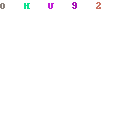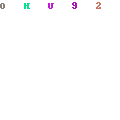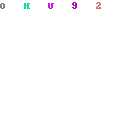Anti-virus Program Can't Help with Win32.FakeSysDef-TI [Trj]!
When you tried to repair or delete or move Win32.FakeSysDef-TI [Trj] to chest, the option USE just wasn't functioning (didn't highlight) and couldn't be clicked. Why is that? Its files and registry keys should be responsible for this. Its trace is covered up, systematic and secure-related files are corrupted, security settings are modified, certain programs are hidden to bring up run error when trying to launch the attacked program, especially anti-virus program. Thus, you get repeated alerts on Win32.FakeSysDef-TI [Trj]. But no worries, you can help yourself out with the steps hereinafter; should you get more puzzels, you are welcome to consult Tee Support experts 24/7 online.
What Win32.FakeSysDef-TI [Trj] Does?
Situation simply aggravates if no timely and effective removal is taken. Here are listed dysfunction or troubles you may very well encounter.
- Freezes happen frequently with browsers;
- Restore system to a previous date may be failed;
- Blue screen may come up when you restart after removal;
- Anti-virus program crashes on scans;
- Cannot activate Windows firewall, no internet connectivity;
- Can be detected and quarantine but not be removed permanently;
- Messages about archive is corrupted or missing may keep showing;
- Locks up the CPU with randomly-titled process running at 100% usage;
- Snail-like PC performance, delay when typing and slow loading times to start or shut down;
- Anti-virus program is shutdown, update or any running of security related program is disabled.
Steps to Tutor You How to Eradicate Win32.FakeSysDef-TI [Trj]
Step1:Restart your system and get into the safe mode with networking As the computer is booting but before Windows launches, tap the "F8 key" continuously which should bring up the "Windows Advanced Options Menu" as shown below. Use your arrow keys to highlight "Safe Mode with Networking" option and press Enter key.

Step2:Please stop the processes listed below Press CTRL+ALT+DEL key to open Task Manager

random.exe
Step3:Go to the Registry Editor to delete all related entries listed below Click “Start” menu, hit “Run”, then type “regedit” click “OK”.


Related registry keys:
HKEY_CURRENT_USER\Software\Microsoft\Windows\CurrentVersion\Run
HKCU\Software\Microsoft\Windows\CurrentVersion\Run\Inspector %AppData%\Protector-[ rnd].exe
HKCU\Software\Microsoft\Windows\CurrentVersion\Settings\net [data of installation]
HKCU\SOFTWARE\Microsoft\Windows\CurrentVersion\Ext\Stats\{00A6FAF1-072E-44CF-8957-5838F569A31D}
Step4: Delete related files and folders
%systemdrive%\Program Files\Common Files\ComObjects\*.* /s
%systemroot%\*. /mp /s
%systemroot%\*. /rp /s
%systemroot%\system32\*.dll /lockedfiles
%systemroot%\Tasks\*.job /lockedfiles
%systemroot%\Installer\ /s
%systemroot%\system32\Cache\ /s
%systemroot%\system32\config\systemprofile\ /s
%PROGRAMFILES%\*.
Video on How to Deal with Processes and Registries
Note: instruction above pertains to experienced PC users. Due to its ability to invite other malware, you are very like to be under other PC attack even after the removal of Win32.FakeSysDef-TI [Trj]. To get help instantly, you’re welcome to start a live chat with Tee Support experts 24/7 available here.
No comments:
Post a Comment